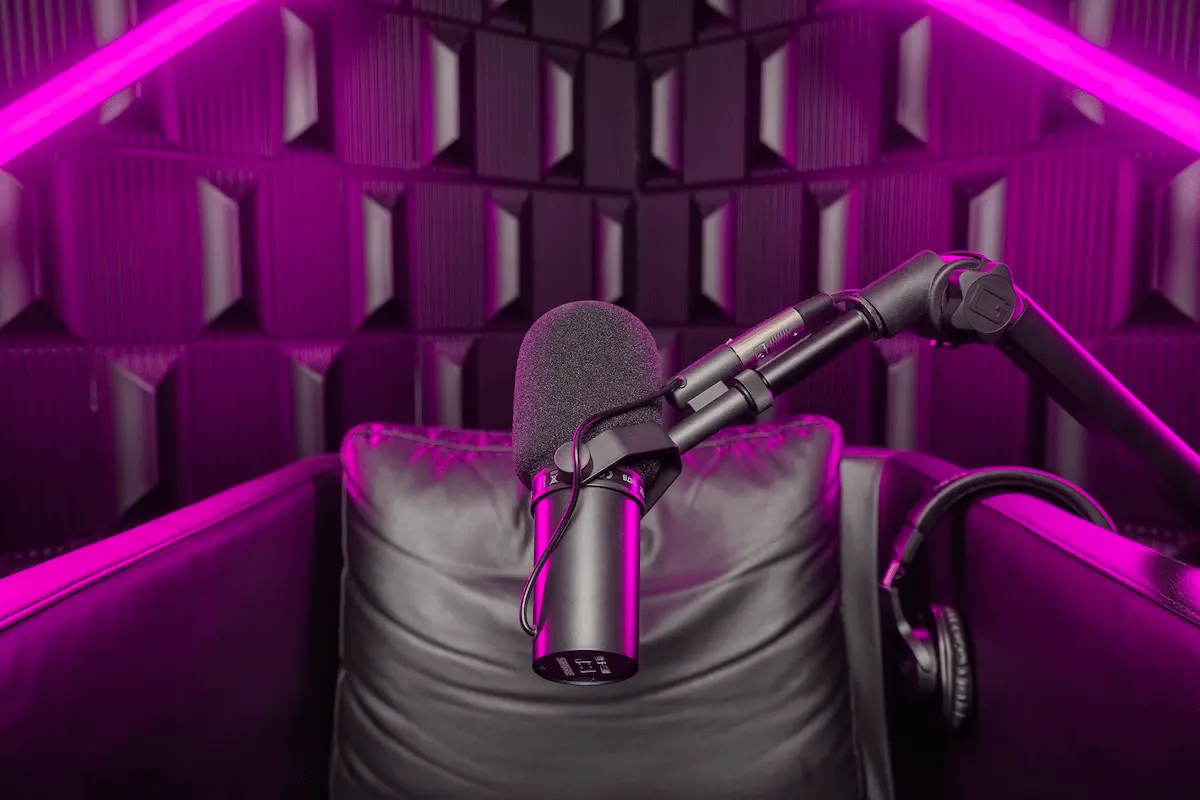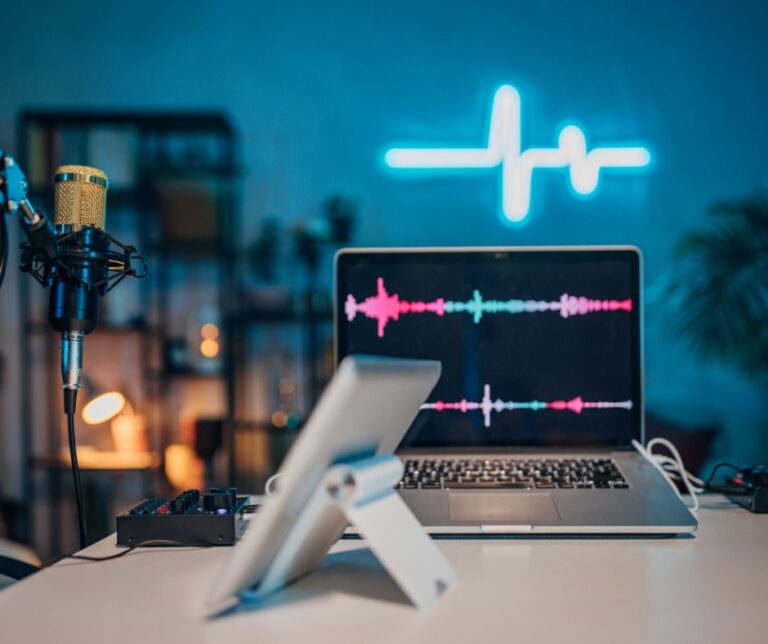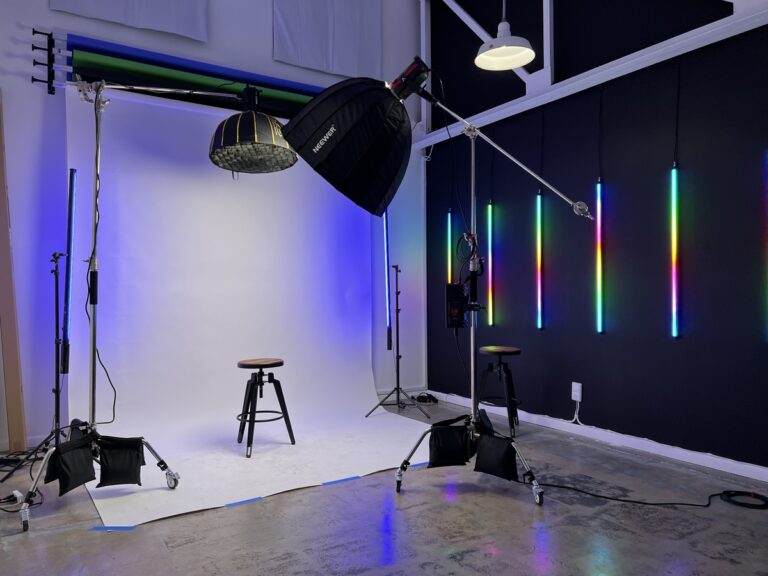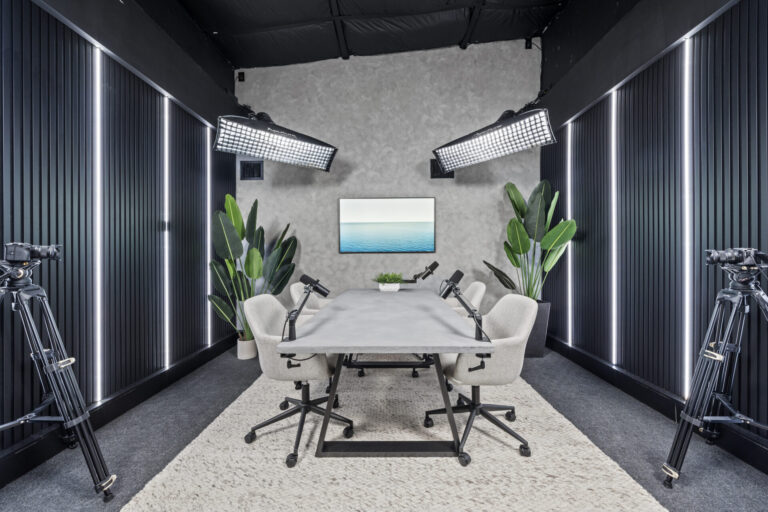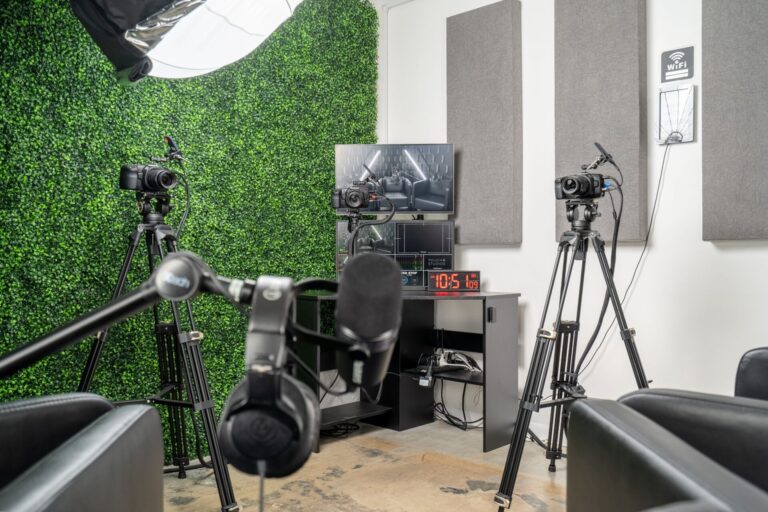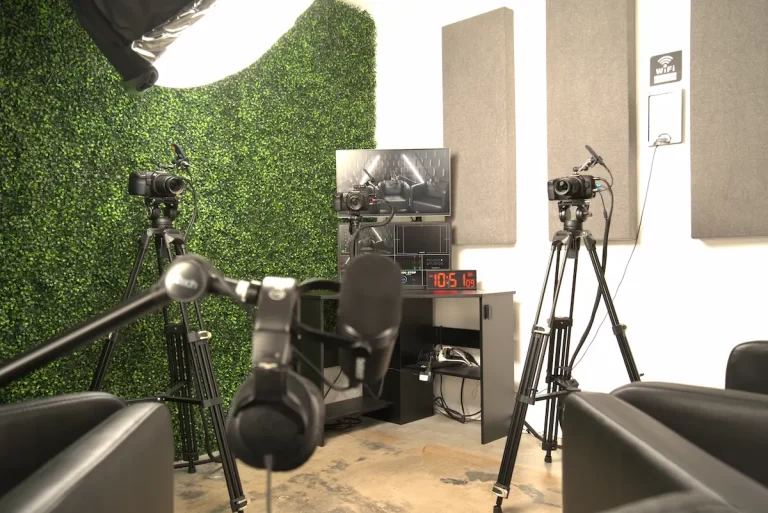The Podcaster’s Playbook: From Concept to Connection
Podcasting is a super popular form of digital media that lets you listen to or watch audio and video content whenever you want.
It’s been gaining a lot of traction lately, with millions of podcasts covering all sorts of topics for you to enjoy.
In addition, podcasting is a really convenient and accessible way for individuals and organizations to share their thoughts, ideas, and stories with people all over the world.
Starting a podcast has so many awesome benefits and opportunities. It’s a great way to connect with a specific audience and build a community around your content.
Plus, podcasting gives you a unique platform to show off your expertise, unleash your creativity, and establish yourself as a thought leader in your field. And the best part? It’s a flexible and versatile way to tell stories, educate, entertain, and even make some money from your content.
Whether you’re a business owner, content creator, or just super passionate about something, starting a podcast can be an incredibly rewarding adventure.
In this article, you’ll learn some of the best tips for starting a podcast. When you’re done reading, you’ll be able to jumpstart your podcasting with a confident, focused and creative mindset!
Preliminary Steps
To kickstart your podcast journey, it’s crucial to first define your niche. Think about the specific topic or theme that you want your podcast to revolve around. This will help you attract and engage a dedicated audience who shares your interests.
It’s also important to understand your target audience in order to create content that truly resonates with them.
Take the time to research and analyze your potential listeners to gain insights into their preferences, demographics, and interests. This knowledge will guide your content creation and allow you to tailor your podcast to meet their needs.
Don’t forget to check out other podcasts in your niche as well. Identify your competitors and give their shows a listen.
This can provide valuable inspiration and help you understand their strengths and weaknesses. It’s also an opportunity to find ways to differentiate yourself and stand out from the crowd.
So, take the time to do your research, analyze your audience, and learn from others in your niche. This will give you valuable insights to refine your content strategy and make your podcast shine!
Planning Your Content
Crafting Compelling Episode Ideas:
First, do some audience research to find out what topics they’re really into. Then, gather your team and brainstorm some super cool and engaging episode concepts.
Plus, sprinkle in some personal experiences or interviews with experts to add that extra touch. And hey, keep an eye on current trends and news for some fresh and relevant content ideas.
Structuring Your Episodes:
Let’s kick things off with a captivating introduction to really grab your listeners’ attention. Make sure to clearly define the main topic or theme of each episode so your audience knows what to expect.
To keep things organized, divide your content into sections or segments. Oh, and don’t forget to include smooth transitions to guide your audience through the episode.
Creating a Content Calendar:
First, decide how often you want to release your episodes – weekly, bi-weekly, or perhaps monthly.
Next, plan ahead and outline your episode topics for each release to stay on track. Consider adding seasonal or timely content that aligns with your target audience’s interests.
Lastly, set realistic deadlines to ensure consistent creation and release of your awesome content.
Essential Equipment
When it comes to getting top-notch audio recordings, choosing the right microphone is crucial. You’ll want to think about factors like the type of microphone (dynamic, condenser, ribbon), its polar pattern (cardioid, omnidirectional, bidirectional), and its frequency response to make sure you capture sound perfectly.
Now, let’s talk about audio editing software. There are plenty of options out there, each with its own unique features and capabilities.
Some popular choices include Adobe Audition, Audacity, Pro Tools, and Logic Pro. Take some time to research and find the software that best fits your specific needs and budget.
Aside from a microphone and audio editing software, you might also want to consider other recording gear.
This could include things like a pop filter, microphone stand or boom arm, shock mount, audio interface, headphones, and acoustic treatment for your recording space. Think about what you require and what you can afford to determine which additional gear will enhance your recording setup.
Setting Up Your Podcast Studio
When setting up your podcast studio, start by creating a soundproof space. Use materials like acoustic panels, foam, or curtains. Choose a quiet location and seal gaps or cracks in doors and windows to minimize external noise.
Organize your equipment with a dedicated space, like a desk or shelf. Use cable management solutions to keep cables tidy. Consider using shelves or drawers for easy access.
Optimize your recording environment by improving acoustics with diffusers and bass traps. Position your microphone at the optimal distance and angle for clear audio. Experiment with different placements and settings to find the perfect setup for your podcasting needs.
Recording Best Practices
When it comes to podcasting, your voice is your most powerful tool. Practice speaking clearly and confidently, and use vocal techniques like modulation and emphasis to engage your listeners.
Experiment with microphone setups to find the one that suits your voice best. Remember to relax and enjoy the process!
Background noise can distract from your podcast’s quality. Find a quiet space to record, away from appliances or outside traffic.
Consider using soundproofing materials or a noise-canceling microphone to minimize background noise. Editing software can also help remove unwanted noise during post-production.
Deciding between solo recordings or interviews depends on your podcast’s nature and your preference. Solo recordings give you control over content and flow, allowing you to share your thoughts directly.
Interviews bring diversity and fresh perspectives. Prepare in advance by researching guests and preparing thoughtful questions to keep the conversation engaging.
Editing and Polishing
This section covers some fundamental editing techniques that you can use to improve the quality and coherence of your content. You’ll learn about trimming, splitting, and merging clips, adjusting audio levels, and more!
And hey, ever thought about adding some captivating intro and outro music to enhance your content? It’s a great way to grab your audience’s attention and make your message more memorable. Feel free to explore different genres and styles to find the perfect tunes that complement your content.
Oh, and let’s not forget about sound effects! They can really take your content to the next level. Whether you want to add suspense, emphasize certain moments, or create a specific atmosphere, this section will guide you on selecting and integrating sound effects effectively. So, go ahead and give it a try!
Hosting Platforms
Choosing the right podcast hosting service is crucial. It can impact your podcast’s reach, distribution, and analytics. Compare hosting platforms to find the one that suits your needs best, considering storage, bandwidth, cost, and directory integration.
Once your episode is ready, upload it to your chosen hosting platform. Add details like the title, description, and tags, then upload the audio file. Each platform has its own process, but it’s usually straightforward.
RSS feeds play a vital role in podcast distribution. An RSS feed contains information about each episode, including titles, descriptions, images, and audio files.
Submit your RSS feed to directories like Apple Podcasts or Spotify for automatic updates. Keep your subscribers up to date with the latest content.
Crafting Engaging Cover Art
When designing podcast artwork, remember a few key principles. First, create visually appealing cover art that stands out.
Think vibrant colors, captivating images, and eye-catching typography. Keep it simple and clear to convey your message easily. Avoid cluttering with too many elements. Lastly, ensure your artwork reflects the podcast theme or topic for quick understanding.
Now, let’s discuss tools for creating stunning podcast cover art. Popular options include Adobe Photoshop, Canva, or GIMP for graphic design.
These tools offer features and templates to get started. Find free or royalty-free images on Unsplash, Pixabay, or Freepik. Typography matters too! Google Fonts and DaFont have a great selection.
Consistent branding is vital for recognition and a professional image. Align your artwork, episode titles, and overall branding. Maintain consistency throughout your podcast journey.
Remember, engaging cover art considers design principles, uses the right tools, and stays true to your brand. Happy designing!
Launch Strategy
To make sure your launch is a success, it’s crucial to build up anticipation. Get people excited with teasers, sneak peeks, and behind-the-scenes content. Don’t forget to engage with your audience through interactive activities and exclusive previews.
Also, when choosing the launch date, consider market trends, what your competitors are up to, and what your target audience prefers. Social media is your friend here. Use it to connect with your audience, create captivating content, collaborate with influencers, and run targeted ads.
Encourage your audience to create content too, and make sure to analyze your social media data to fine-tune your strategy. And remember, stay flexible and adapt along the way.
Building Your Audience
Do you want to boost your podcast? Try promoting it through different channels like social media, email newsletters, and online communities.
You can also make use of catchy titles, engaging descriptions, and eye-catching visuals to grab the attention of potential listeners.
Another great idea is to collaborate with fellow podcasters or influencers in your niche. You can do guest appearances, shoutouts, or even create joint episodes.
By tapping into each other’s audience, you’ll expand your reach and gain new listeners.
Oh, and don’t forget to interact with your listeners! Respond to their comments, messages, and social media posts.
Encourage them to leave reviews and ratings, and be sure to respond to their feedback and suggestions.
Building a sense of community and engaging with your audience will not only create loyal fans but also give you valuable insights into their preferences and interests. Keep the conversation going!
Monetization Tactics
When it comes to making money from your podcast, partnering with brands and companies for sponsorships and ads is a common tactic.
By incorporating relevant ads or mentioning sponsors in your episodes, you can generate revenue.
Another way to monetize your podcast is through crowdfunding or accepting donations from your listeners.
This allows your audience to financially support your show, either through one-time contributions or recurring payments.
And hey, creating and selling merchandise related to your podcast can be a great way to make some extra cash.
Think t-shirts, mugs, or other branded items that your fans can buy to show their love for your show. So, get creative and start monetizing your podcast!
Ensuring Consistent Quality
To make sure we consistently deliver top-notch quality, it’s crucial to keep learning and improving.
That means staying updated with the latest industry trends, technologies, and best practices. By always seeking knowledge and refining our skills, we can level up our work and achieve better results.
Another key aspect of ensuring consistent quality is gathering feedback from our listeners. Actively seeking and listening to their feedback gives us valuable insights into their preferences, needs, and expectations.
This feedback helps us identify areas for improvement and make necessary adjustments to meet and exceed listener expectations. So, let’s keep learning, growing, and delivering quality work!
The industry is constantly changing, so you make sure that you change with it, otherwise, you’ll lose growth opportunities. Therefore, you must stay up to date with everything that happens, and if need be, tweak some things about your podcast to keep succeeding.
Legal Considerations
When it comes to podcasting, there are a few legal considerations to keep in mind to stay compliant and avoid any potential disputes.
First and foremost, podcasters need to respect copyright laws when using materials created by others.
This includes text, images, video, and sound clips. While there is a doctrine called fair use that allows for the use of copyrighted material under certain circumstances like critique or commentary, it’s a bit of a gray area, so it’s best to approach it with caution.
If you plan on adding music to your podcast, it’s important to secure the necessary rights from the copyright owners.
This usually means paying licensing fees, which can vary depending on your specific use and the size of your audience.
Lastly, it’s crucial to have a clear agreement with any guests who appear on your podcast. This agreement should cover important aspects such as the disclosure of confidential information, ownership of the content, and the guest’s right to review and approve the final version before it’s published.
So, it’s always a good idea to keep these legal considerations in mind to ensure a smooth and trouble-free podcasting experience.
Metrics and Analytics
Podcast analytics provide valuable data and insights into a podcast’s performance. Analyzing these metrics helps podcasters understand their audience, including listens, downloads, and engagement levels.
By using this data to inform content creation and marketing strategies, podcasters can improve their podcast’s quality and attract a larger, more engaged audience.
Key metrics to track include listens, downloads, listener engagement, demographics, and conversion rates.
Monitoring these metrics enables podcasters to optimize their content and grow their audience effectively.
Summary
In conclusion, the key steps involved in podcasting start from conceptualizing your podcast idea, identifying your target audience, planning and structuring your content, recording, editing, and finally promoting your episodes.
The core concepts involve being authentic, consistent, and engaging in your podcast content to form a deep connection with your audience.
Remember, podcasting is not just about speaking into a microphone; it’s about engaging storytelling, sharing valuable insights, and fostering a community around your podcast. Lastly, it is vital to set realistic expectations.
Be patient, as growing a podcast audience takes time. Success won’t happen overnight, but with persistence, passion, and quality content, your podcast can reach and inspire countless listeners.

